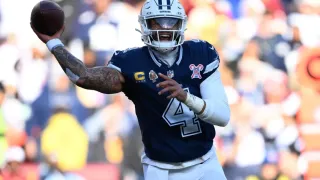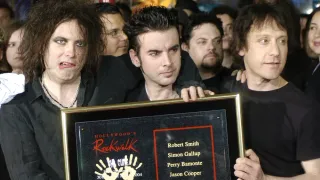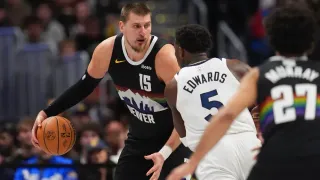June 28, 2015
Gaining on Pain
Kilian Melloy READ TIME: 3 MIN.
"No pain, no gain" is about "owning it." Embracing the burn, pushing through fatigue and putting in the extras be they reps or distance. It's the mantra for the "push" needed to make progress.
Though, as we age, with those gains we tend to get associative pain we may not have been looking for, which lasts beyond the workout itself. It's about finding effective ways to work safely, within our ability and within pain tolerance levels as you continue to train. Working around those pain areas is key to sticking to it. Often times, we use any pain, as an excuse to not work out. Giving up those hard-fought gains - when working around the pain - to help it heal, is healthier and more effective than not doing so, at all.
For instance, if your upper body has some sort of trauma or injury, your lower body is still fully functional. Conversely, if your lower body is compromised, you can do everything in your workout routine, seated or lying down, for that matter.
Safety is important. Soreness is the body's first bell in its alarm system, but don't allow the occasional bump or bruise to derail your gains. Pain, too, takes on differing potentialities. A dull ache is different than a sharp shooting one, though even the sharp shooters, have workarounds.
Let's take a painful grip for instance, as a work-around. Open your palm and let's start with the pinky first. Draw the little finger inward until the top of the little finger touches your palm at about mid palm. Now, do it again, but watch your forearm and which muscles are affected in that movement. Now, do that with each successive finger all the way to the index finger, paying close attention to how the forearm reacts. It stands to reason that varying your grip intensity, in terms of which finger(s) are really clamping down, changes the stressors in your forearm, up to and through the elbow.
I had a nice nasty case of tendonitis. Along with a combination of therapy modalities and most importantly, modifications to how I gripped bars, ropes, bands, benches, etc., I was totally able to recover from the tendonitis. Doing so, through adjusting my grip intensity by finger during my workouts, which moved the tension off of the area in my elbow extracting the most pain. Doing so, not missing a single workout.
Here's another illustration. Stand up and look down at your feet; in the best case scenario, structurally toe to heel, our feet do not internally nor externally rotate. It is how we were made. If your feet splay out in a normal stance, that is to say, they rotate from noon to one o'clock on the right side, or say, noon to 11 o'clock, on the left... that is typically a sign of imbalance in your thigh musculature, which generally is the root cause of the rotation of our feet off of parallel.
Consequently, that rotation puts more pressure on the inner side of your knee. A splayed foot more easily pronates, promoting arch/ankle inward collapse, i.e., with most of the weight on the inside edge of the feet. A pronator also usually has inward knee collapse, which puts even more pressure on the inner part of the knee and stresses the hip. So, if you have knee pain, look down at your feet. Changing their alignment when getting out of a chair or walking up the stairs, will "workaround" your pain.
My knees don't collapse, nor do I have pronating feet, but I do have years of wear and tear on my knees, especially my dominant right side. What I have found is that by keeping a slight internal rotation on my right foot, (during any exercise relating to my legs), the pressure point in my knee migrates to outer verses inner. Voila... I am golden. If I push through the heel, it's even better, as that translates more to the hams and glutes and less to knees and quads. See what I mean? It's another workaround... and on multiple levels. this time.
The point is to stay in the game, even as you age. "My shoulder hurts," is not cause enough to quit. Gravity never quits, though if you do, the muscles that support that shoulder joint atrophy. Gravity just keeps on pulling. You want less pain? Find and use "workarounds"and keep showing up.
Sweat. It's the body's way of applauding you for staying in the game, regardless of the pain. Hear the roar?
 Copyright Rage Monthly. For more articles from Rage visit
Copyright Rage Monthly. For more articles from Rage visit 





